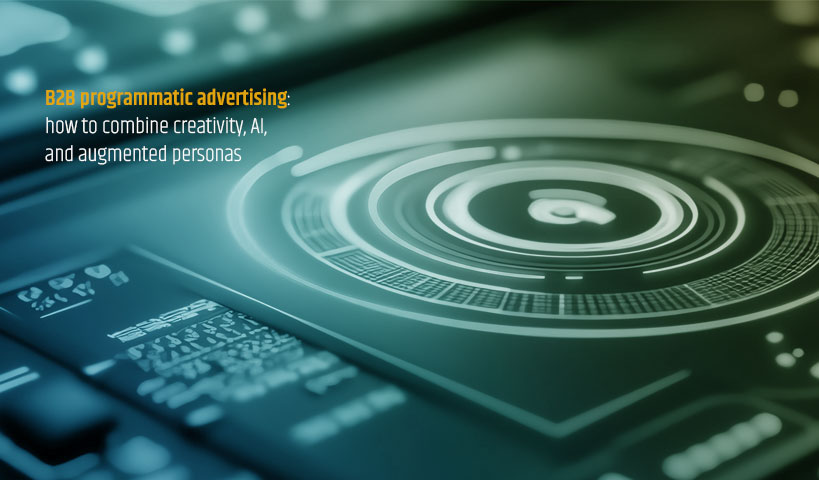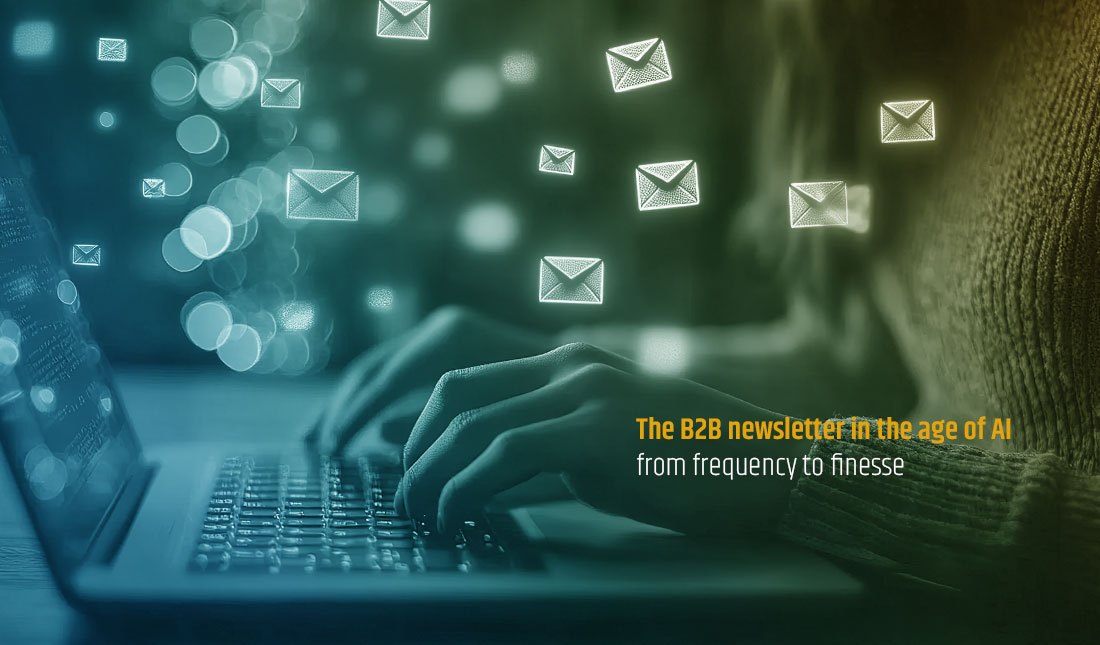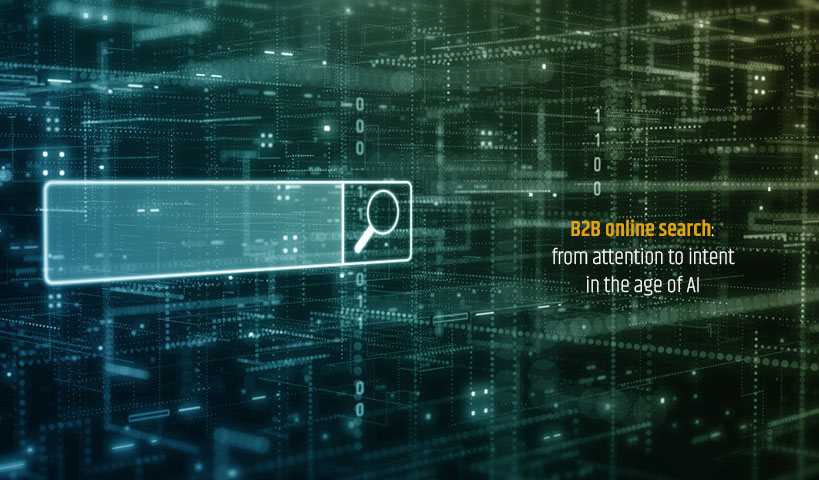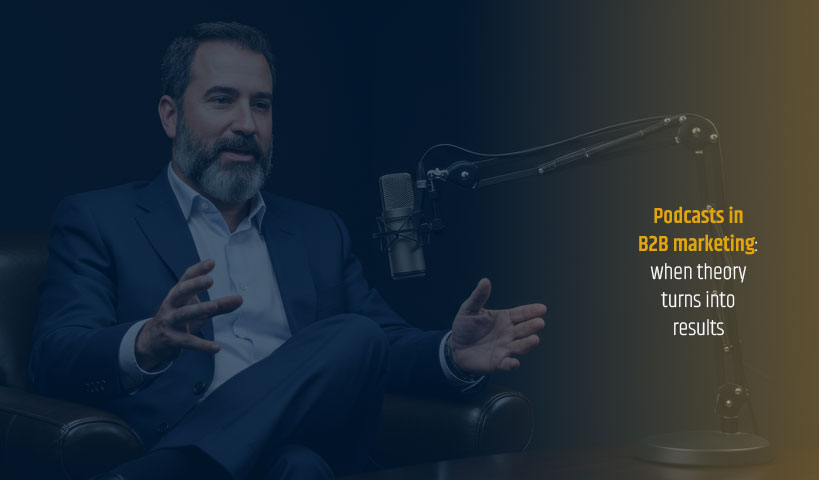
B2B programmatic advertising is becoming an essential tool for reaching decision-makers at the right time. However, it often remains underutilized. The report From Guesswork to Greatness, published by TripleLift and eMarketer, reminds us that creativity is a major factor in performance… but one that is still poorly defined, poorly measured, and poorly exploited.
In B2B, this weakness is critical: purchasing cycles are long, decision-making committees are numerous, and every interaction counts. A poorly calibrated B2B programmatic advertising campaign can waste months of effort. So how can we move from intuitive creativity to a measurable and sustainable approach? At ExoB2B, we see a clear answer: augmented personas.
When creativity in B2B programmatic advertising is poorly exploited
The report indicates that 83.5% of marketers consider creativity to be essential to advertising performance. However, only 58.5% share a clear definition of what constitutes “good creative.” As a result, B2B programmatic advertising too often relies on fragmented visions.
The findings are worrying:
- 54.3% of marketers acknowledge that their content is not updated often enough
- 51.8% admit to producing too few variations for different audiences
- 43.9% rely on a single format, which reduces the effectiveness of campaigns
Creativity exists, but it is going round in circles..
Measuring creative impact in B2B programmatic advertising
Another finding from the report: 71.3% of marketers say that evaluating creative has become more important than ever. But in reality, only half of them actually link creative quality to measured performance.
In other words, many are still content with general impressions: “it looks good,” “it should work,” “the visuals are beautiful.” However, without reliable indicators, it is impossible to know whether a creative message actually influences a click, a conversion, or an appointment booking.
At ExoB2B, we believe that creativity should be evaluated with the same rigor as the rest of marketing. Yes, we can measure click-through rates (CTR), viewing time, and conversions. But we can also go further by integrating test loops: trying out several versions, measuring, and adjusting. This is the only way to link creativity to real ROI.
The role of AI in B2B programmatic advertising
Artificial intelligence is playing an increasingly important role in the creation and delivery of programmatic campaigns. Already:
- 50% of marketers use it to write copy
- 37.8% use it to generate images or videos
- 29.3% use it to ensure contextual consistency
And more than half (54.9%) anticipate that AI will soon automate the majority of processes.
In concrete terms, AI simplifies B2B programmatic advertising: it adapts formats, quickly tests several variants, and ensures message consistency. But beware: AI remains a tool. In B2B, where trust is essential, only humans can capture nuances and validate the emotional relevance of a message.
Why B2B programmatic advertising requires greater relevance
In B2C, a good advertisement can trigger a purchase in a matter of seconds. In B2B, it’s a different story. Decisions often involve several months of deliberation, multiple people around the table, and considerable technical or financial stakes.
In this context, generic or poorly adapted creativity quickly wears thin. First a video that is repeated too often becomes invisible. Then a message that is too vague doesn’t get past the first reader. Or a campaign that is too rigid misses its moment.
This is exactly where the augmented persona comes into play.
Augmented personas: the key to optimizing B2B programmatic advertising
From a static portrait to a living profile
A classic persona is a static snapshot: it describes an ideal customer type at a given moment, but it does not capture changing needs or context. An augmented persona is the equivalent of a dynamic GPS that responds to data in real time.
It integrates:
- CRM data (purchase history, sales cycle, past interactions)
- Dynamic signals (LinkedIn activity, content downloads, event participation)
- External data (market trends, investment announcements, new regulations)
The result: the persona is not theoretical, but evolves continuously with the reality of potential customers. It thus becomes a common basis for aligning marketing and sales, which finally work with the same up-to-date vision of the market.
More relevant creative decisions
The contribution of augmented personas to B2B programmatic advertising is concrete: teams know when, what, and how to communicate.
- When: identify moments of receptivity, for example after an executive appointment, a white paper download, or participation in a trade show.
- What: tailor the message to the specific challenges of the moment (cost reduction, regulatory compliance, technological innovation).
- How: choose the right format (technical webinar for an engineer, industry case study for a decision-maker, summary video for an executive).
A bridge between data and creativity
With augmented personas, B2B programmatic advertising is no longer generic. It becomes contextualized, personalized, and measurable. The persona acts as a bridge: it transforms a mass of raw data into targeted creativity that speaks to the right people, at the right time, and in the right tone.
B2B programmatic advertising: traditional vs. augmented personas
B2B programmatic advertising is nothing new. For several years now, it has been used to automate media buying and deliver ads to targeted audiences. But in practice, many companies still stick to a traditional approach based on fixed rules, limited formats, and sometimes a superficial understanding of potential customers.
The problem? Campaigns end up running out of steam. Messages lose their relevance. And performance plateaus due to a lack of direct connection to real market signals.
This is where augmented personas make all the difference. They transform B2B programmatic advertising into a living, evolving system, where messages are adjusted based on CRM data, online behavior, and industry trends. This shifts the focus from basic automation to true contextual intelligence, where each ad is based on an accurate, up-to-date portrait of the potential customer.
| Aspect | Traditional programmatic | Programmatic with augmented personas |
|---|---|---|
| Creative definition | Vague, based on aesthetics | Aligned with dynamic profiles |
| Content updates | Rare and static | Continuous, based on market signals |
| Formats used | Limited to 1 or 2 formats | Multiple variations adapted to the context |
| Performance measurement | Isolated CTR, little connection to ROI | Connected, ROI-oriented dashboards |
| Role of AI | Partial automation | Partial automation |
Towards a new generation of B2B programmatic advertising
With augmented personas, B2B programmatic advertising becomes more than just a distribution tool: it transforms into a strategic driver. Campaigns no longer simply reach predefined audiences: they adapt in real time, improving relevance and maximizing return on investment.
In other words, B2B programmatic advertising is shifting from a static, generic model to a dynamic, personalized model capable of supporting long B2B cycles and strengthening relationships of trust with decision-makers.
Conclusion: mastering B2B programmatic advertising
The TripleLift/eMarketer report reminds us that creativity is a performance driver, but it often remains underutilized. In the B2B context, this weakness is even more critical: each interaction influences a relationship that can last for several years and generate considerable business opportunities.
B2B programmatic advertising cannot therefore be limited to automated ad delivery. It must become a hybrid approach, where:
- AI accelerates processes and takes care of repetitive tasks
- Humans retain control of judgment, intuition, and creativity
- Augmented personas connect real data and signals to precise, relevant, and measurable messages
It is this combination that transforms generic B2B programmatic advertising into a contextualized and sustainable communication strategy capable of supporting the long and complex decision cycles specific to B2B.
In short, it’s time to move from intuition to mastery. At ExoB2B, we support companies in this evolution by designing programmatic campaigns that harness the full potential of AI and augmented personas. Contact us to find out how to make B2B programmatic advertising a real growth driver for your organization.
Frequently asked questions (FAQ)
What is the difference between a classic persona and an augmented persona?
A classic persona is static. The augmented persona evolves continuously thanks to CRM data, LinkedIn, and market signals. It makes B2B programmatic advertising more relevant and measurable.
Is B2B programmatic advertising only for large companies?
No. It is now accessible to industrial and technology SMEs, provided they clearly define their personas and objectives.
Can creative impact really be measured in B2B programmatic advertising?
Yes, and it’s essential. Good indicators go beyond CTR: conversions, engagement time, and influence on the sales cycle must be tracked.




